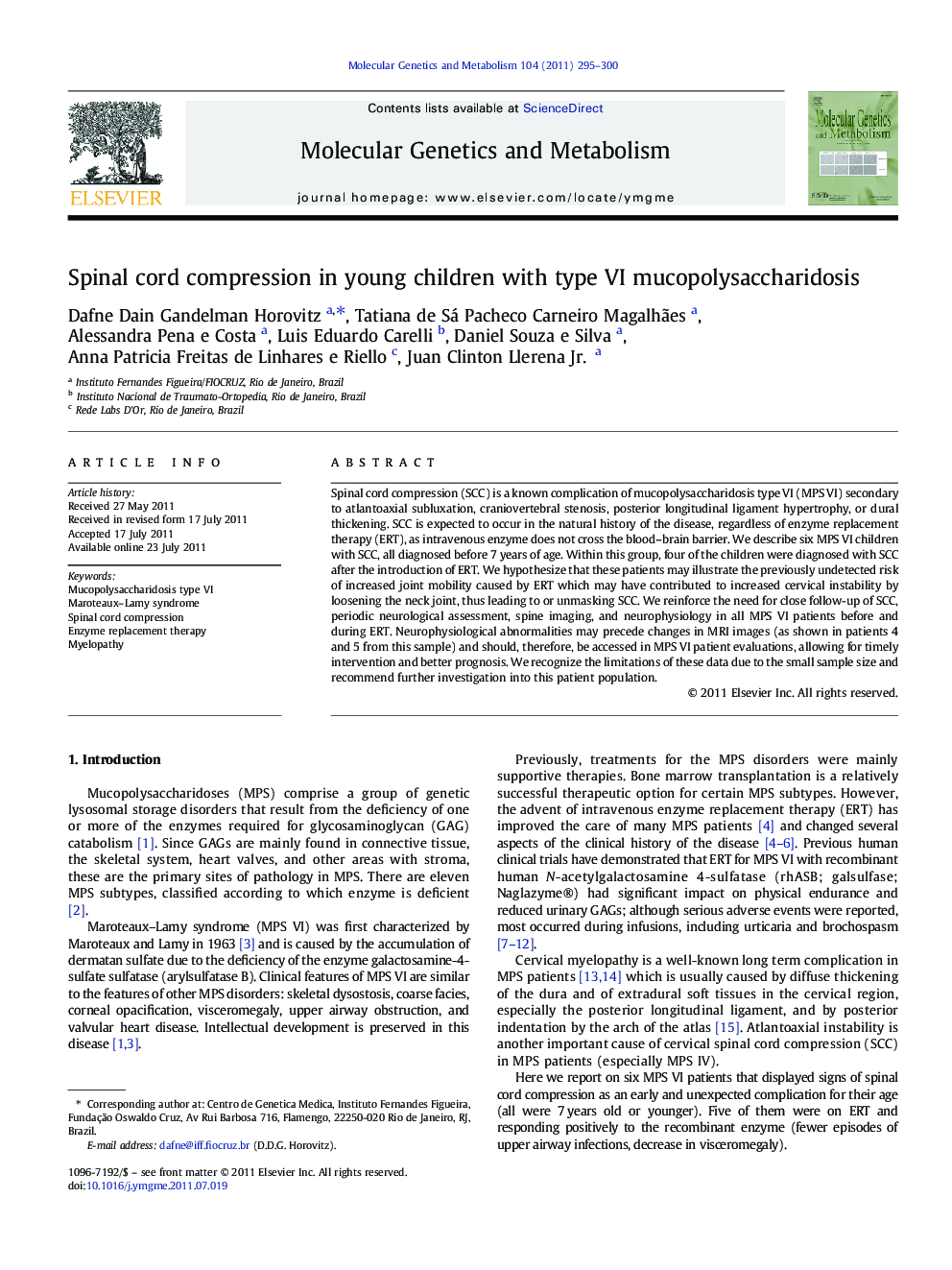| Article ID | Journal | Published Year | Pages | File Type |
|---|---|---|---|---|
| 10833958 | Molecular Genetics and Metabolism | 2011 | 6 Pages |
Abstract
Spinal cord compression (SCC) is a known complication of mucopolysaccharidosis type VI (MPS VI) secondary to atlantoaxial subluxation, craniovertebral stenosis, posterior longitudinal ligament hypertrophy, or dural thickening. SCC is expected to occur in the natural history of the disease, regardless of enzyme replacement therapy (ERT), as intravenous enzyme does not cross the blood-brain barrier. We describe six MPS VI children with SCC, all diagnosed before 7Â years of age. Within this group, four of the children were diagnosed with SCC after the introduction of ERT. We hypothesize that these patients may illustrate the previously undetected risk of increased joint mobility caused by ERT which may have contributed to increased cervical instability by loosening the neck joint, thus leading to or unmasking SCC. We reinforce the need for close follow-up of SCC, periodic neurological assessment, spine imaging, and neurophysiology in all MPS VI patients before and during ERT. Neurophysiological abnormalities may precede changes in MRI images (as shown in patients 4 and 5 from this sample) and should, therefore, be accessed in MPS VI patient evaluations, allowing for timely intervention and better prognosis. We recognize the limitations of these data due to the small sample size and recommend further investigation into this patient population.
Keywords
Related Topics
Life Sciences
Biochemistry, Genetics and Molecular Biology
Biochemistry
Authors
Dafne Dain Gandelman Horovitz, Tatiana de Sá Pacheco Carneiro Magalhães, Alessandra Pena e Costa, Luis Eduardo Carelli, Daniel Souza e Silva, Anna Patricia Freitas de Linhares e Riello, Juan Clinton Jr.,
